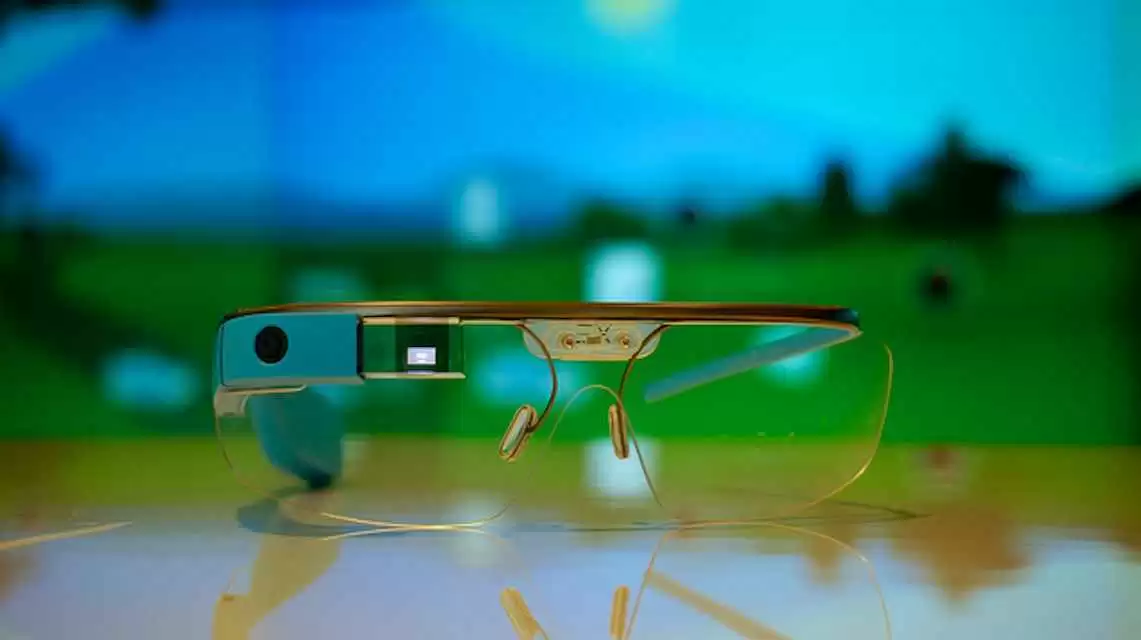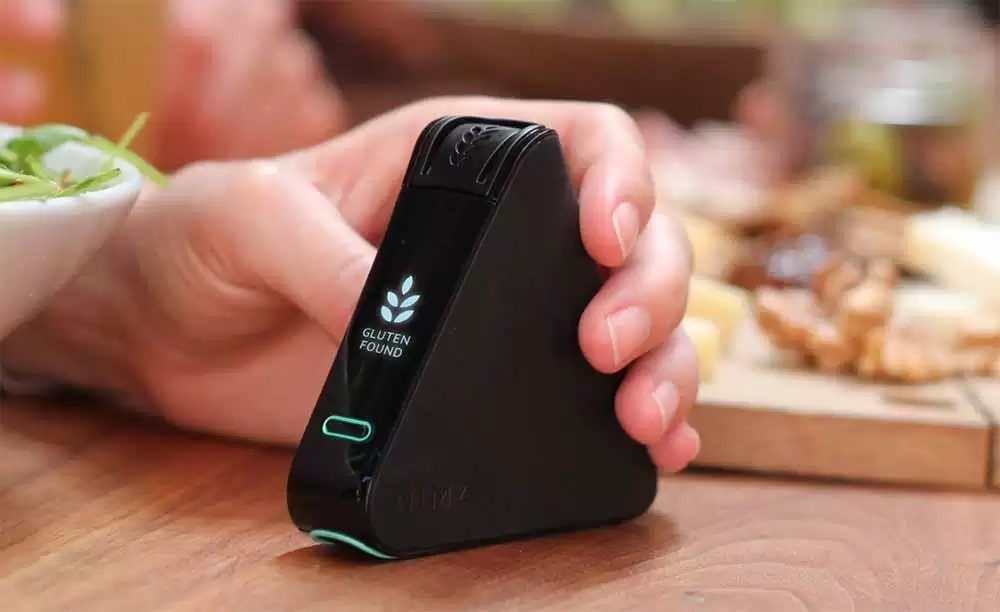Celiac.com 11/03/2025 - Many people must avoid gluten to protect their health. For those with celiac disease, even very small amounts of gluten can trigger damage to the small intestine. Unfortunately, gluten proteins are hard to spot during food preparation and serving, especially in restaurants and shared kitchens where cross-contact is common. A key gluten protein called gliadin is especially troublesome because it does not dissolve well in water and often hides in mixtures with other wheat proteins. The study summarized here introduces a portable test designed to quickly and reliably detect gliadin in real foods, helping people make safer choices in real time.
The New Test Strip Smartphone Application
The researchers created a handheld test strip and paired it with a smartphone camera and a simple image-reading application. The strip uses a type of test flow that pulls a food extract across several printed lines. Each line is coated with proteins or antibodies that interact with gliadin in different ways. The smartphone application photographs the strip, measures how dark each line appears, and translates the pattern into an easy-to-understand result. The entire process is designed to take about three minutes from sample to verdict.
How the Test Strip Works
Celiac.com Sponsor (A12):
The strip contains three key lines that work together:
- Operation line: This line acts like a built-in check that the strip and the liquid flow are working. If this line does not appear, the test is invalid.
- Eat line: This line uses a “competition” setup. When gliadin in the sample is very low, the line appears dark; as gliadin increases, the line fades. This line is tuned to be informative around five to ten parts per million of gluten content.
- Limit line: This line uses a “sandwich” setup that darkens as gliadin rises, then weakens again when gliadin becomes very high. That weakening at high content is a known issue in many test designs called the “hook effect,” and the investigators exploit it on purpose here to encode ranges of gluten content.
By reading the three lines together, the strip produces a visible “code.” The pattern tells the user whether gluten is very low (zero to five parts per million), low (five to ten parts per million), moderate (ten to twenty parts per million), or high (above twenty parts per million). Twenty parts per million is the level commonly used by regulators to define whether a food can be labeled gluten-free.
What Is Inside the Chemistry (Explained Simply)
The test uses tiny gold particles that glow with a red color when they gather on a line. These gold particles are coated with antibodies that stick to gliadin. The team carefully tuned the particle size, the antibody coating, and the acidity of the solution to ensure the particles stay stable and bind specifically to gliadin. The researchers verified the coating and the behavior of these particles with multiple laboratory techniques, but the key takeaway for a non-scientist is that the chemistry was built and checked to be both specific and stable.
Sensitivity, Accuracy, and Speed
The study tested many samples containing known gliadin levels and compared the strip’s readings against a laboratory standard method called the enzyme-linked immunosorbent assay (spelled out here so readers do not need abbreviations). The strip and the smartphone analysis closely matched the laboratory method across the ranges that matter most for gluten-free safety. The eat line is most useful below about ten parts per million, while the limit line is most useful from about five to twenty parts per million. Together, they cover the range that determines whether a food is likely safe for people who must avoid gluten.
The strip reached a decision in roughly two to three minutes. With an optimized liquid mixture that helps pull gliadin out of the food, the first visible lines began appearing in as little as about eighty seconds. The smartphone application then converts the line pattern into a clear result in about one minute more.
Reliability and Specificity
Reliability means the test gives the same answer when repeated, and specificity means the test responds to gliadin rather than to unrelated food ingredients. The team ran repeat tests within the same day and across different days and found very small variation. They also tested flours and foods from many grains and legumes, sometimes mixed with milk to mimic real recipes. Only gluten-containing cereals produced the expected positive signals; gluten-free grains such as rice and corn did not trigger false alarms.
Real-World Checks in Restaurants and Packaged Foods
The investigators used the strip on restaurant foods such as burgers, pizza, salads, and beer, as well as on items labeled gluten-free. As one would expect, wheat-based items usually tested high. Some surprises emerged: salads sometimes tested positive because of dressings or because a mixing bowl had previously held croutons. French fries, a common trouble spot, sometimes showed contamination likely due to shared fryers. Still, the majority of items labeled gluten-free fell below twenty parts per million.
The researchers also tested a wide range of packaged products and compared the strip’s readings with the laboratory method. Across chocolate, candy, soup, crackers, noodles, and other everyday foods, the portable system and the laboratory method agreed well, even when gluten was present at only a few parts per million.
Ease of Use and Data Sharing
The companion smartphone application photographs the strip, interprets the line pattern, and logs the result. It can store the date, the place, and the name of the food, and it can share results with others. The authors describe using these features to build a map of local restaurants and menu items, with each entry tagged by its measured gluten range. In short, the system is not only a test, but also a way to build a living guide to safer eating.
Strengths, Caveats, and What Comes Next
Strengths include speed, low cost per test, simple preparation, and the ability to read meaningful ranges rather than just “yes” or “no.” The design cleverly uses two different line formats to avoid the common problem of false negatives at very high gluten content. The smartphone analysis reduces user guesswork, which is a common source of error in home strip tests.
Caveats are similar to any rapid food test. Results depend on how well the user extracts gliadin from the food. Highly uneven foods or very oily or sticky foods may require extra care to get a representative sample. As with all testing, a single result is most useful when considered with common-sense precautions: ask questions at restaurants, avoid obvious risks such as shared fryers, and repeat tests when something seems off.
The authors suggest the same platform could be adapted to detect other food allergens such as milk, peanuts, tree nuts, fish, or shellfish, or even other small molecules and toxins, by swapping in the right binding proteins. That could turn this single-purpose tool into a broader family of consumer food safety tests.
Why This Matters for People with Celiac Disease
For people who must avoid gluten, life is a constant balance between vigilance and participation in everyday meals. Cross-contact and mislabeling remain real risks in restaurants and shared kitchens, and even a few parts per million can matter. This study offers a practical step forward: a fast, portable, and semi-quantitative test that aligns with the twenty-parts-per-million standard used to define gluten-free foods. By giving users a clear readout within minutes—and by allowing them to record and share results—the system can help reduce accidental exposure, guide safer dining choices, and build community knowledge about where safe options truly exist. In short, it can turn uncertainty into informed action, which is exactly what many people with celiac disease need when they are away from home.
Read more at: pubs.acs.org











Recommended Comments
Create an account or sign in to comment
You need to be a member in order to leave a comment
Create an account
Sign up for a new account in our community. It's easy!
Register a new accountSign in
Already have an account? Sign in here.
Sign In Now